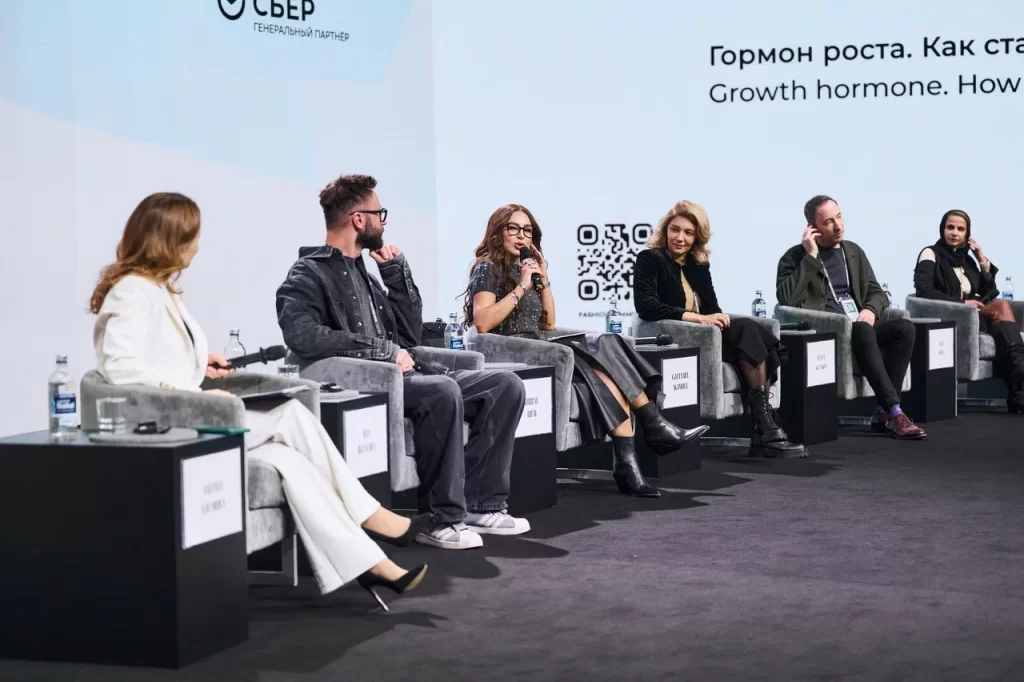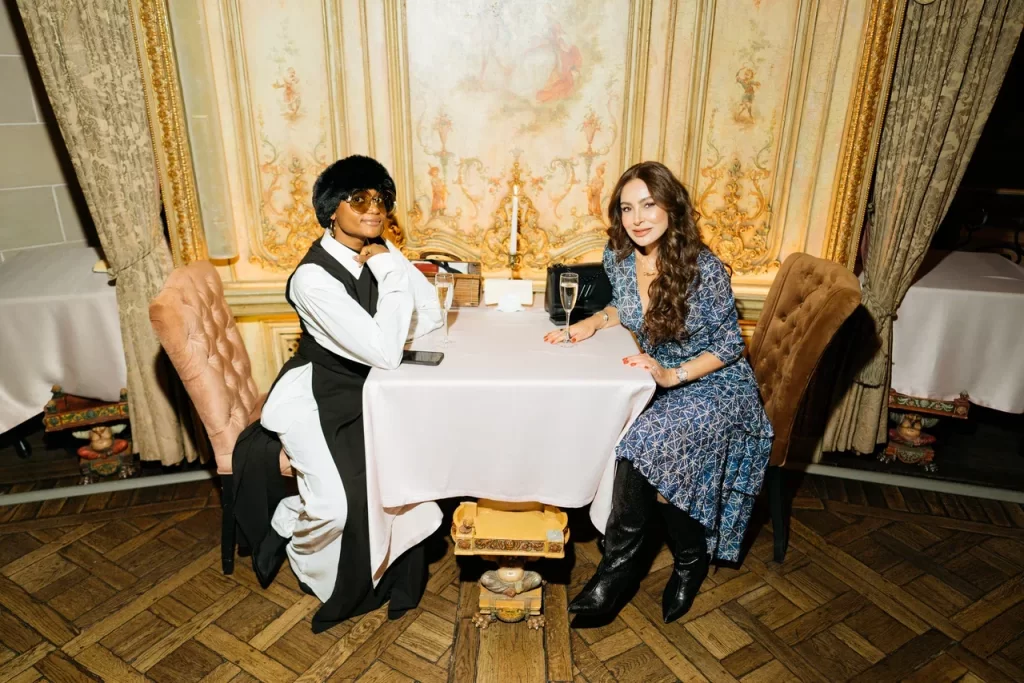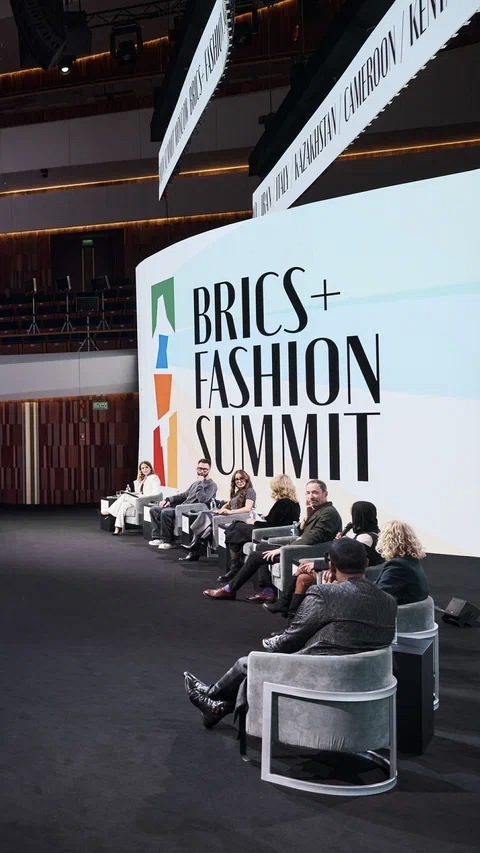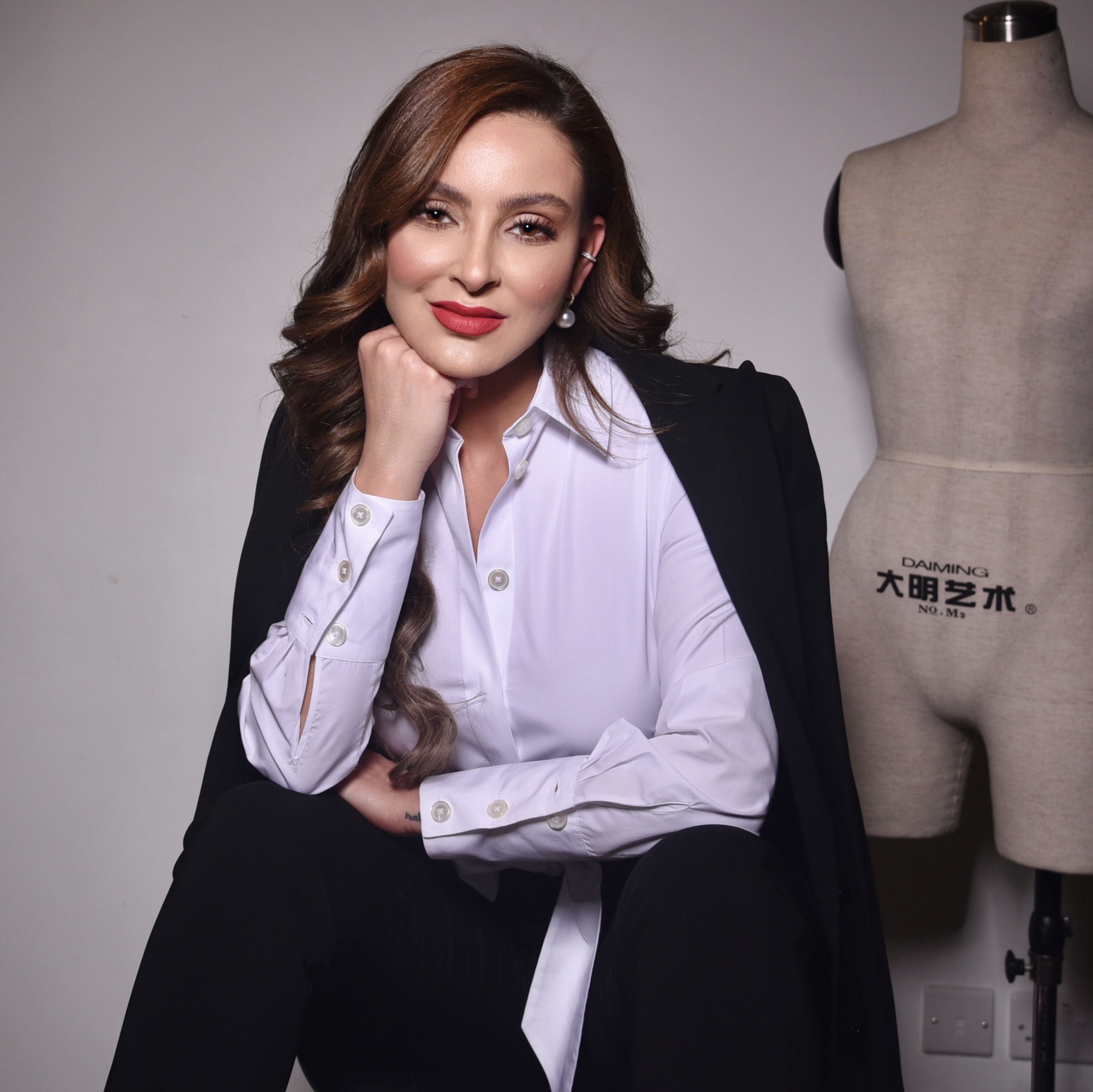Life has a funny way of throwing surprises at us; these surprises are often opportunities we never saw coming. It’s all about being ready to jump at them when they do. On a seemingly ordinary Friday morning, July 28, 2023, one such unexpected chance landed right in my inbox.
“Dear Shirene,
We’re putting together the BRICS+ Fashion Summit, a gathering that brings together emerging markets, including China, India, Russia, and Brazil. Your involvement would mean a lot.
Best,
Alexander Shumsky
[President of the Russian Fashion Council and Mercedes-Benz Fashion Week Russia, and Co-founder of Fashion Fund.]”
Slated for November 28 – December 2, 2023, in Moscow, the BRICS+ Fashion Summit would draw over 200 speakers and 60 delegates to explore the establishment of a new fashion ecosystem that encourages brands to preserve originality and indigenous culture, embrace collaboration and share strategies for extending their reach beyond specialised niche markets.
Without hesitation, I responded with a resounding yes!
Over the past two decades, I’ve participated in countless fashion conferences and shows; however, the BRICS+ Fashion Summit was especially intriguing. For one thing, it was the inaugural fashion event for the BRICS+ alliance, bringing together government delegates and industry professionals from across Europe, Asia, the Middle East, Latin America, Africa, South-Eastern Asia, and the CIS, paving the way for cross-cultural and cross-industry dialogue and collaboration. On the other hand, it promised a unique glimpse into markets I needed to familiarise myself with. I was eager to exchange ideas with experts, compare notes with fellow founders of Fashion Weeks, understand the fashion scenes in these countries and their unique challenges, and delve into emerging trends. Most importantly, I hoped to connect with and support designers struggling to thrive in this profoundly competitive sector, and here’s why.
Navigating the fashion industry: from self-discovery to mentorship

My journey into fashion entrepreneurship and luxury brand consulting didn’t start on a straightforward path. I navigated the complexities of the Middle East’s media and fashion scenes for nearly two decades, learning everything from scratch. My career kicked off in the late ’90s as a magazine fashion editor—a role unheard of in my country then. With a law degree in hand rather than a fashion-related qualification, I had no choice but to become my own teacher in this field. A mentor would have been a game-changer, yet in their absence, I relied on my own research and trial-and-error to carve out my space in the fashion industry.
And it worked. I discovered that I had a real passion for fashion and publishing. In under two years, the magazine doubled the size of its fashion section, eventually growing to include a separate bridal issue that I personally worked on from A to Z. I developed such a solid reputation that I was later appointed as Editor-in-Chief, creating six other fashion and lifestyle magazines spanning Jordan and Lebanon. Even though I had to hire and train my contributors from a pool of local reporters and freelancers who’d never touched the fashion subject, the magazines soon became Jordan’s premier publications. Their success brought me recognition, fashion event invitations, and designer endorsements, which led to local and international luxury brands reaching out to me to help them create localised marketing, PR and social media campaigns, culminating in establishing my own consultancy.

My career path has been rising, but the journey could have been smoother. Every step of the way came with its own set of hurdles, and I wasn’t the only one jumping through them. Working alongside fellow fashion insiders, it became crystal clear how much we needed more guidance and financial support. Despite being surrounded by incredible yet unrecognised talent, there needed to be a platform for them to shine or infrastructure to boost their careers. That’s why, in 2019, I took the plunge and founded Jordan Fashion Week. It wasn’t just about spotlighting local and regional designers but about opening doors to new opportunities with buyers and the press. I also took it upon myself to mentor emerging talents, offering my experience and connections at no cost to help them forge their own paths and make their mark in the fashion world. This is why being part of the BRICS+ Fashion Summit was such a valuable opportunity; it furthered my mission to empower others and contribute to the growth and resilience of my industry.
Growth hormone: how to become a fast-growing brand
During my participation in the summit, I had the honour of speaking on a panel discussion intriguingly named ‘Growth Hormone: How to Become a Fast-Growing Brand’. This session was about uncovering the secret sauce to brand growth competitiveness and catching the eye of those elusive investors. I was in great company, joined by a diverse and dynamic group of panellists, each bringing their unique flavour to the mix. We had Ilya Bulichev, the creative mind behind BLCV, known for their handcrafted jeans; Alexandra Kaloshina, who’s transforming the fabric of fashion at Solstudio Textile Group with digital textile design and printing; Gyulnara Agamova, the driving force at Creative Industries Agency, pioneering in consulting and event management for Russia’s creative sectors; Alexey Kulakov, steering the marketing ship at Lamoda Group, an online retail giant; David Tlale, the celebrated South African fashion icon and the brains behind his eponymous brand; and Alia Khan, leading the way in modest fashion as the Chairwoman of the Islamic Fashion and Design Council in the U.A.E. Together, we delved deep into the essentials of making a fashion brand not just survive but thrive. It was a rich discussion, tapping into each panellist’s diverse experiences and insights, giving us a 360-view of what makes a fashion brand grow fast and strong.

While each panellist shared their unique take on what drives a brand’s growth, we found common ground on a few key ideas. One pivotal insight was that expansion isn’t the right path for every designer. True success comes from knowing who you are as a brand first. It’s about carving out your distinct style, really getting to grips with your niche, refining your craft, solving problems on the fly, and bouncing back from setbacks—all within the comfort of your home turf. Before even thinking about scaling up, it’s crucial to check that your financials are in order, your supply chain is robust, your team is ready, and your production can keep up with a surge in demand. It’s about ensuring your brand is theoretically prepared for growth and genuinely set for action in the real world.
Facing another unavoidable truth, embracing a business-focused approach is crucial. While you might consider teaming up with a dependable business ally to handle the finance and logistics side, chances are, you’ll have to either learn the ropes of business yourself or bring in experts to cover areas you’re less familiar with. Whichever route you decide on, the value of being skilled in managing people is something you simply can’t ignore. Successfully handling relationships with both employees and clients is integral to growth. Building trust in the market and securing investments is nearly impossible without effective people management. You also can’t relegate yourself to staying behind the scenes as an entrepreneur; your active engagement with the business aspects of your profession is necessary.
Integrating storytelling also came up repeatedly. Storytelling is the bridge that forges an emotional connection between your customers and your brand. Through it, designers can consistently underscore their distinctive identity and build a like-minded and devoted following. To maintain authenticity and consistency, strategically select partners and sales platforms that align with and amplify your brand identity. Incorporating innovation in design, leveraging technology, and utilising an eclectic range of communication tools and content will also enhance the storytelling experience, ensuring a dynamic and compelling connection with your audience.

During the panel, there was a lot of agreement on many issues, but using artificial intelligence (AI) in design really stirred the pot. Many folks were wary about letting AI into the creative space, but if you ask me, the heart of the matter is more about when and how we let AI join the party. These days, new brands frequently turn to AI to delegate their entire design process. However, a critical question arises: Can these designs align with the brand’s identity and be effectively implemented? AI cannot compensate for lacking design and tailoring skills; the emphasis should consistently be on mastering the art of creating clothing for real bodies. The key is not to delegate the entire design generation process to AI. Instead, AI can shine as a valuable tool during brainstorming, inspiring designers to leverage it to craft unique iterations. Beyond design, AI and other tech tools can be crucial in providing marketing support and engaging customers through innovative platforms like augmented reality or virtual changing rooms. That said, while collaborating with AI can offer valuable tools and insights that revolutionise the creative and business processes, be mindful of ethical considerations when using it.
Beyond the panel: Fashion industry advice from experience
I’ve noticed that designers face a significant hurdle to success regardless of their talent when they lack a clear vision. Long-term planning, both a skill and a discipline, can propel even moderately skilled designers to greater heights. This foresight should be nurtured and adhered to right from the inception of your brand or at its earliest stages. Having a defined target and establishing a growth trajectory are paramount. Once you’ve identified your brand’s DNA, set a five-year plan and be ambitious. Craft a business plan that seamlessly aligns with your overarching vision, ensuring its viability at each stage. The first year can serve as a testing period to determine whether your passion is robust enough to carry you forward since successfully managing and growing a fashion brand demands relentless effort. Suppose your passion endures beyond this grace period, and you can adeptly navigate the challenges. In that case, the prospect of transforming your brand into an international business might be a natural progression for you.

When it comes to branching out into new markets, you can take a dual-path strategy: lean into organic growth opportunities, like when overseas clients come calling, or scout out countries with a craving for what you’re offering. Dip your toes in first—maybe through pop-up events or showcase your work in select spots abroad—to feel the interest level. The key? Don’t wait around for the perfect game plan. Just start moving. As you gear up to spread your wings, don’t hesitate to knock on new doors persistently. If the budget’s there, jet-setting to fashion gatherings can be a goldmine for making connections and lining up the right logistical and retail alliances—networking and fostering community ties open doors to invaluable opportunities. Hit a roadblock? Mentorship can offer a way forward. Nowadays, with social media and the digital world at your fingertips, reaching out to industry pros is simpler than ever. When you finally choose your next market, remember while it’s crucial to stay true to your design ethos, a little adaptation to meet your new audience’s unique tastes and cultural nuances can go a long way.
Integrating sustainability into your brand’s DNA on a budget becomes an essential skill as the world embraces sustainability. While futuristic designs incorporating innovative materials gain traction, their cost may be prohibitive. At their early growth stages, designers can embrace more accessible sustainability practices without breaking the bank by adopting seasonless and genderless designs, reusing old stock, focusing on ethical supply chains, and making mindful packaging choices. It’s about making conscious decisions, educating oneself, and gradually incorporating sustainable practices within financial constraints.
In the early stages of your venture, grounding your decisions in empirical data is crucial. The marketplace offers a plethora of accessible and cost-effective tools for data collection and analysis, vital for acquiring insights into customer demographics and understanding seasonal sales trends. By analysing consumer behaviour, businesses can identify which designs resonate most with their audience and tailor their marketing strategies accordingly. Continuous monitoring of sales data year over year is instrumental in determining whether to focus efforts on local market penetration or to explore opportunities for broader geographical expansion. Additionally, social media platforms provide an invaluable resource for preliminary feedback on product designs, allowing for adjustments before the launch of a comprehensive collection. Employing data analytics enables businesses to make well-informed, strategic decisions, laying a robust foundation for sustainable growth.

Advice for African Fashion Brands
- Uplift and support artisan communities– African fashion brands can uplift and support artisan communities by collaborating with local artisans, providing them access to markets, fair compensation, and sustainable livelihoods. This not only creates authentic products but also adds depth to brand narratives while contributing to the preservation of cultural heritage.
- Bridge cultural divides– Fashion is a powerful tool for diplomacy, with African fashion acting as a cultural ambassador to foster global understanding. By engaging in cultural exchanges, showcasing designs internationally, and collaborating with global designers, African fashion brands create opportunities for global connections, expanding their reach and positively shaping perceptions of Africa’s creative contributions to the global fashion industry.
- Fashion and tourism– African fashion brands can collaborate with Ministries of Tourism to boost fashion tourism, positioning their nations as appealing destinations. By partnering with tourism authorities, these brands can contribute to developing fashion-themed tourism experiences, including tours and prestigious events showcasing local designers. This synergy enhances both fashion tourism and Africa’s unique fashion heritage on the global stage, fostering immersive experiences and economic growth.
- Collaborations and Tech– Collaborations beyond fashion offer exciting opportunities for African brands. Partnering with music, film, and technology industries can yield innovative experiences. For example, music collaborations can inspire limited-edition fashion lines, and tech partnerships can explore augmented-reality fashion experiences. Such cross-industry collaborations expand brand reach beyond traditional audiences. Embracing technology trends is crucial; investing in e-commerce, mobile apps, and online marketing enhances digital presence. Innovations like virtual try-ons and AR fashion shows set brands apart. Partnering with influencers and celebrities aligned with brand values boosts visibility and credibility, introducing the brand to new audiences locally and internationally.
Personal takeaways from the BRICS+ Fashion Summit
Reflecting on the summit, I couldn’t help but notice how important community is to fashion entrepreneurs. Connecting with other founders of fashion weeks at the event highlighted the shared challenges that we all face, and it became a wellspring of mutual support. Travelling and exposing myself to new cultures and ideas also underscored the value of maintaining an open mind and embracing continuous learning, reinforcing the notion that staying curious is non-negotiable in a field as dynamic as fashion. The experience also repeatedly highlighted how vital it is to ask questions fearlessly. It’s our pathway to knowledge.
As you progress in this dynamic fashion industry, remember that embracing obstacles and nurturing your passion will equip you with the resilience to navigate with patience and ingenuity despite the challenging journey. The magical combination for a fashion designer’s success lies in possessing passion and a meaningful vision. Passion ignites daily creativity and fuels the commitment required to overcome setbacks, while a meaningful vision offers direction and purpose to your endeavours.



